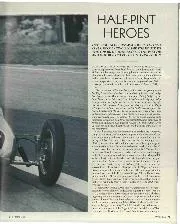
Half-pint heroes
From modest origins as a cheap self-build class, 500cc racing became the route to the top. Bill Boddy recalls the part he and Motor Sport played in its inception. During…
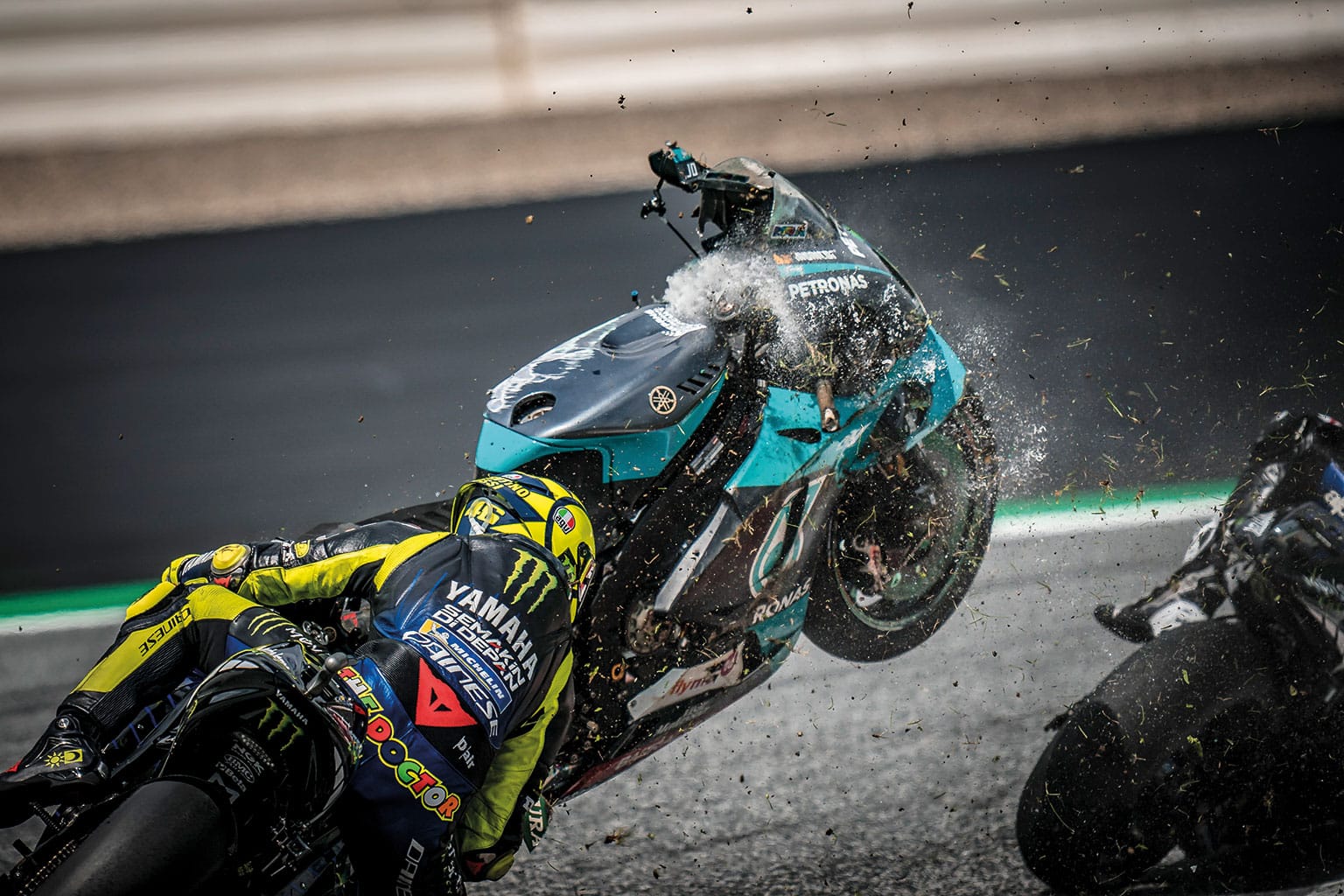
The terrifying moment when the wreckage of Franco Morbidelli’s Petronas-Yamaha flew across the path of Valentino Rossi during MotoGP’s Austrian Grand Prix
Nature abhors a vacuum, so when reigning MotoGP champion Marc Márquez crashed out of July’s season-opening Spanish Grand Prix, ruling himself out of the title fight, everything changed.
Márquez’s absence has transformed MotoGP, upsetting the balance of power and bringing new riders and manufacturers to the fore. At the opening five races there were two rookie winners and a first victory for KTM.
Like Formula 1, the 2020 MotoGP season bears little resemblance to normality, with 14 races at nine European circuits over 19 weekends. And no one knows if the championship will go full distance because COVID, not rights-holder Dorna, is in charge.
The lure of an empty throne and the intensity of a tightly packed, uncertain championship has done something to the riders. The first few races were fraught with crashes, collisions and harsh words.
The Austrian round at Red Bull Ring was marred by one of the scariest accidents seen in motorcycle racing. The incident was triggered when Johann Zarco and Franco Morbidelli collided at the 190mph Turn Two left-hander, their cartwheeling bikes coming within inches of skewering Valentino Rossi and Maverick Viñales at the Turn Three right.
Zarco was controversially punished for his part in the accident, although he claimed innocence. The previous weekend at Brno, the Frenchman had been sanctioned for a collision with Pol Espargaró, which caused the Spanish rider to crash. That punishment also caused controversy and Zarco couldn’t understand why he had been penalised.
“We are supposed to be warriors!” he shrugged. “This is racing, not dancing.”
Next time out at Red Bull Ring, Espargaró collided with fellow KTM rider Miguel Oliveira. Both crashed and engaged in a war of words. “If I was Pol, after two incidents with the same character, I’d start to think if I am approaching racing in the right way, because at the moment that seems questionable,” said Oliveira. “Not everyone is born with the same intelligence.”
That enraged Espargaró. “I would never say that we have not all been born with the same intelligence,” he replied. “It is pretty hard and especially because the bike he is riding is the bike I have been making since KTM entered MotoGP in 2017. Imagine if I had his intelligence to make a bike. We would’ve been winning last year already! What he said is a huge disrespect.”
The MotoGP paddock hasn’t been so febrile since the notorious finale to the 2015 championship, when Márquez, Rossi and Jorge Lorenzo fought for the title.
The first rider to fill the Márquez vacuum was Fabio Quartararo. The 21-year-old Frenchman, who came close to beating the Spaniard on several occasions during his rookie season last summer, took back-to-back victories at the Jerez double-header. Those successes marked him as clear championship favourite.
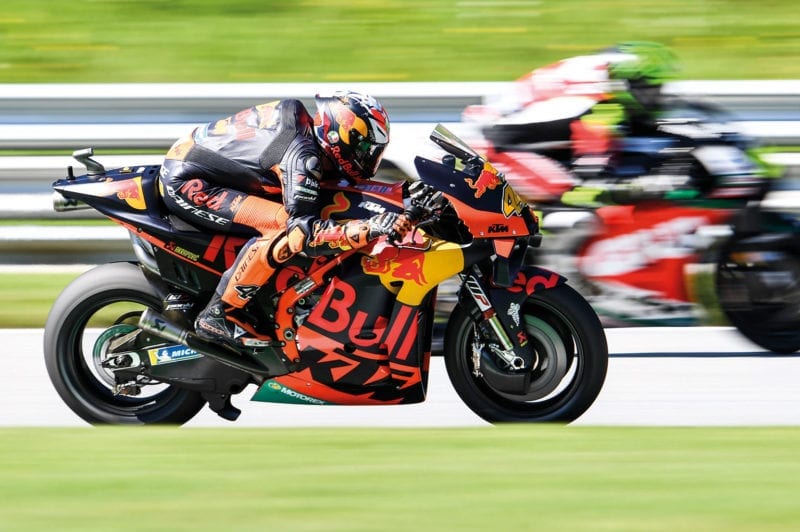
Pol Espargaró had the fastest lap at the Styrian GP and finished third in a nail-biting finale
People were getting ahead of themselves though: Quartararo was in trouble when MotoGP crossed Europe for the next three races, one at Brno, two at Red Bull Ring. The youngster rides for Petronas Yamaha and is armed with top-spec YZR-M1s, identical to those used by factory riders Viñales and Rossi. As usual Yamaha is down on horsepower, so while Quartararo was in his element at Jerez, where corner speed is everything, they had nothing for the more powerful Ducati and KTM V4s at the next two tracks. Quartararo struggled to seventh at the Czech GP and eighth and 13th at the Austrian and Styrian rounds, his title lead shrinking to three points.
Honda is in even bigger bother. The brand that won six of the last seven MotoGP titles, thanks largely to the otherworldly skills of Márquez, is enduring its toughest season since the early 1980s, when it went racing with the fabulous but flawed oval-piston NR500.
Honda and Yamaha have dominated MotoGP ever since Honda parked the NR and became more pragmatic about grand prix racing. Since 1983 the two Japanese factories have won all but four of the 74 MotoGP rider and constructor world titles. Finally, this duopoly is under threat.
KTM won its first MotoGP race at Brno, with rookie Brad Binder, and its second, with Oliveira, at the Styrian GP, when he was the beneficiary of a last-corner clash between Espargaró and Ducati’s Jack Miller. When they climbed the podium it was the first time since the 1973 Swedish GP that no Japanese manufacturer had been in the top three.
Does this represent a sea change in MotoGP’s technology race? Possibly, possibly not. Ducati has occasionally rattled the cages of the Japanese manufacturers since it created its Desmosedici MotoGP bike in 2003.
KTM seems to be a greater threat to Japanese hegemony. The part-Austrian, part-Indian owned brand enjoyed grand prix success in the smaller category before entering the class of kings in 2017. Thus it’s taken a little over three seasons to better Honda, Yamaha, Ducati and Suzuki. This is astonishing.
KTM test rider Alex Hofmann, who previously raced for Ducati and Kawasaki, believes the company has a different approach to its rivals. “They are as precise as the Japanese, but not so complicated, and they are as passionate as the Italians, but not blinded by passion,” he says.
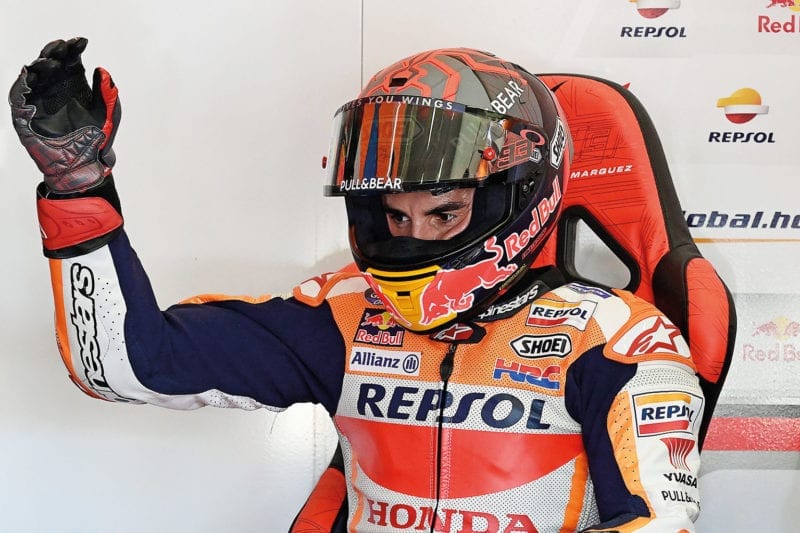
Marc Márquez broke his arm at the Spanish Grand Prix
KTM’s RC16 is powered by a pneumatic-valve, 90-degree V4 engine designed by Kurt Trieb, formerly of Porsche and BMW. Ducati and Honda also race 90-degree V4 machines, because the configuration’s superior straight-line performance more than compensates for its poorer cornering abilities in most race situations. Yamaha and Suzuki use inline-four engines, which produce less power but are more rider-friendly in the corners.
This year’s RC16 is KTM’s first major redesign. The motorcycle still uses a tubular steel frame, very different to the aluminium beam frames used by the other factories, which somehow combines the advantages of a V4 and an inline-four. “Normally with a V4 engine the bike makes less corner speed,” says Espargaró. “So before this year we used more of a V-style cornering line: going to the apex, picking up the bike and using the power to exit fast. But now we have a good feeling with the front, which allows us to release the brake a bit earlier than we used to, stop the bike where we need and carry on for more corner speed.”
KTM also seems to have made the best job of adapting to Michelin’s 2020 spec rear slick, which has a softer construction, deflecting more under load, for a larger contact patch. The Ducati and Honda V4s require a more muscular riding technique, upsetting the delicate balance between front and rear tyres.
Usually Ducati and Honda riders like to kick the rear sideways to turn into corners, but the latest tyre’s extra grip makes this more complicated. “I can’t ride in a good way like in the past, when I was able to brake hard, control the slide to the middle of the corner to be a bit wider, then come back to the apex and pick up the bike,” says 2019 MotoGP runner-up Andrea Dovizioso, who nonetheless won the first race at the Red Bull Ring thanks to his Ducati’s straight-line advantage.
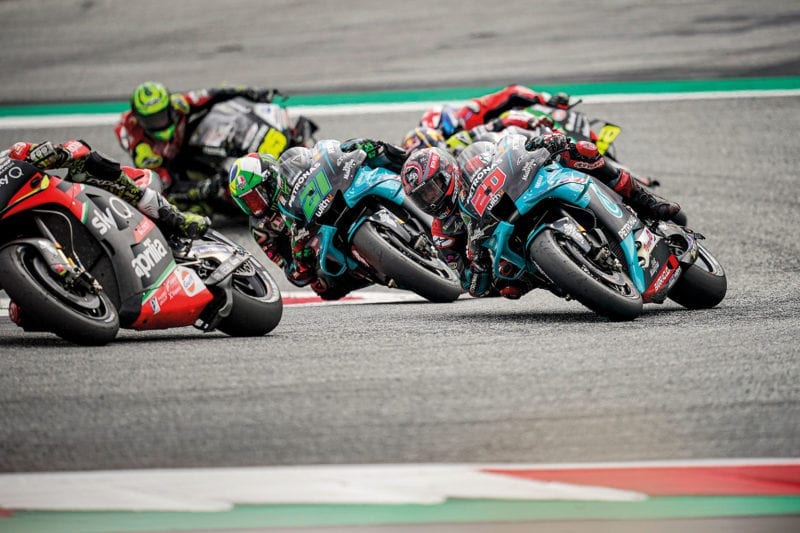
At the Red Bull Ring, Oliveira, right, became the first Portuguese winner, but the field remains wide open
Although Suzuki has the smallest budget of the Japanese manufacturers, its GSX-RR has taken another step forward this season. The bike isn’t as quick as the V4s but it’s strong in the corners, which helped young Spaniard Joan Mir lead the second race at the Red Bull Ring, until another red-flag incident.
“The Suzuki’s acceleration is not as good as ours but they exit corners with more speed,” explains Dovizioso. “We can accelerate much more from the middle of the straight to the end, but if you lose some metres in the first part of the straight it takes a lot of metres to gain on the Suzuki.”
At the end of the Styrian GP the best KTM, Ducati, Suzuki and Honda were covered by 1.8 seconds, with the best Yamaha 3.7 seconds adrift. Such tight racing between numerous manufacturers hasn’t happened by chance.
Over the past 10 years or so Dorna has overseen numerous rewrites of the technical regulations that have equalised performance across the grid. At the same time Dorna has increased payments to the independent teams, helping them compete with the factory set-ups. Now it is entirely normal to see the first 15 riders separated by less than 30 seconds at the chequered flag.